Kenilworth’s Railway, a brief history of its early years
The first plan for a railway line through Kenilworth was surprisingly early in 1836. Robert Stephenson planned the route from a junction at Coventry on the still incomplete London & Birmingham Railway, to a terminus in Leamington.
That scheme did not materialise, but in 1839 Leamington businessmen began to pursue the idea and engaged railway engineer Thomas Woodhouse (whose brother had a Leamington business) to design a new railway to Leamington.
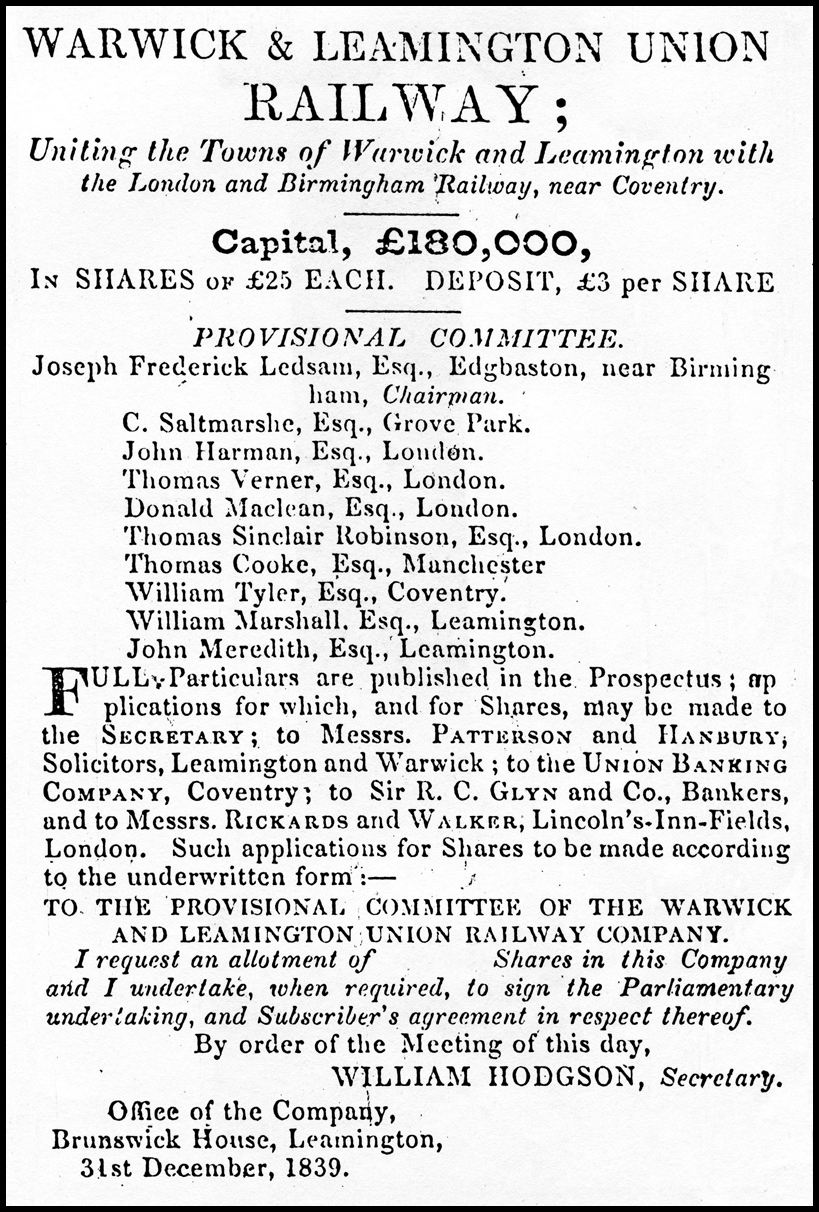
Protest meetings were quickly arranged and one at the Kings Arms saw over 150 sign a petition against the railway; this included several notable local gentry
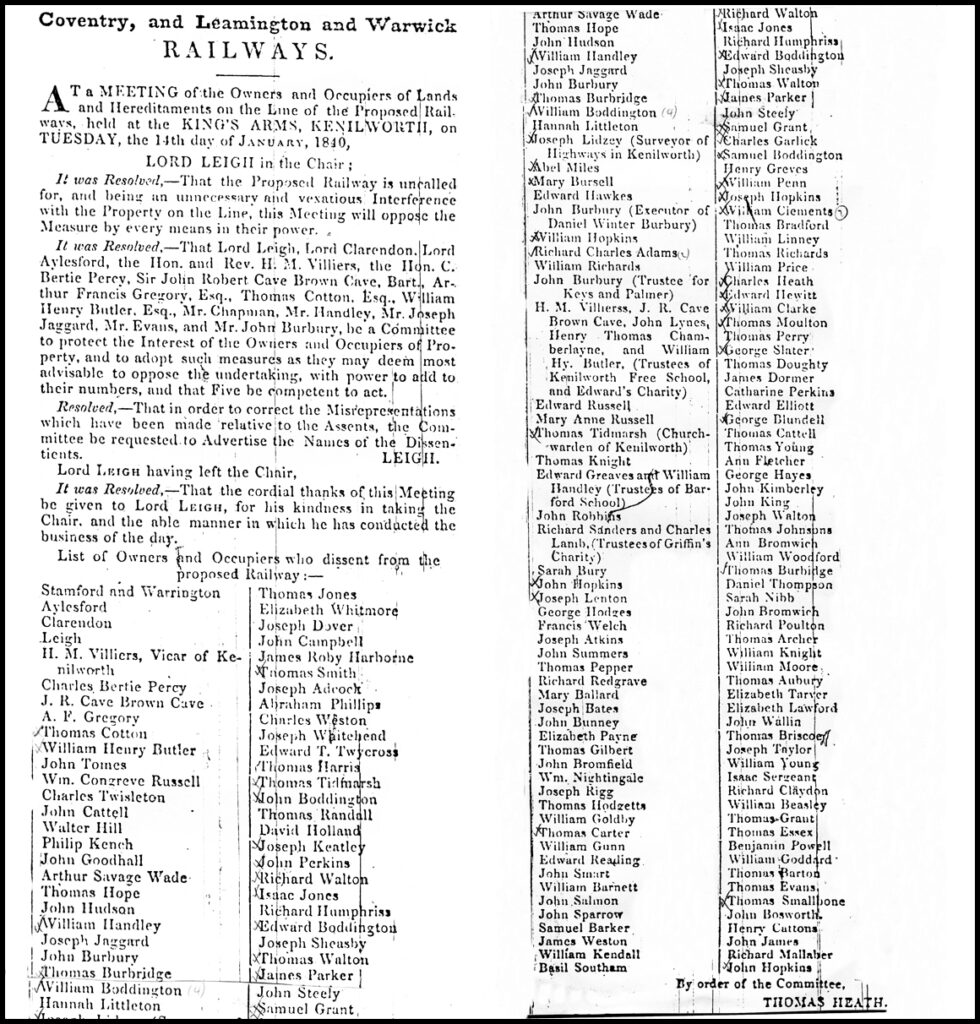
Those I have marked with a cross appeared in Kenilworth’s 1841 census; most of the opposition seems to have been from outside town.
In 1842 the plans received an Act of Parliament but the embryonic company were short of funds, and so it was taken over by the London & Birmingham Railway.
The railway was built outside the town; a new road, originally Clarendon Street but later renamed Station Road, was built across open land to serve the new station. Kenilworth’s first railway station
It is difficult today to appreciate just how vital coal was as a commodity, and coal merchants were quickly established at Kenilworth station, the first known being George Stephenson’s Clay Cross company.
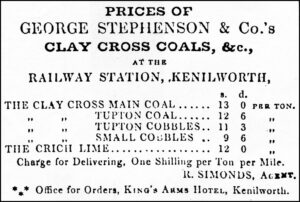
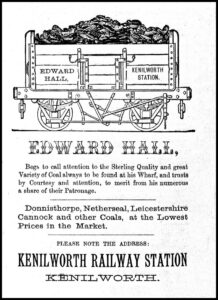
Other commerce flourished too; an ancient market was re-established apparently due directly to the railway’s opening just 15 months previously.
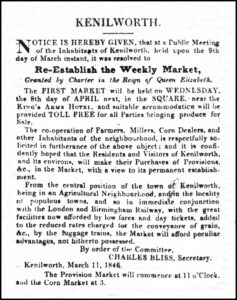
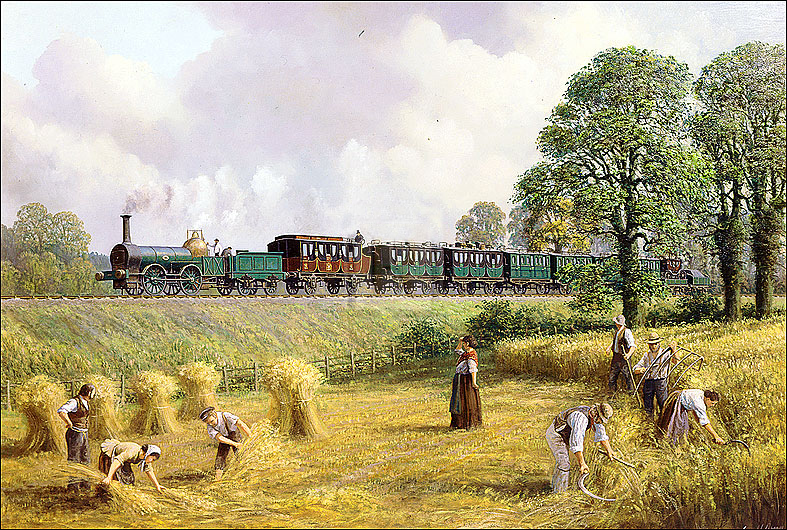
Taken from a London & Birmingham Railway anniversary booklet, this painting gives an idea as to how the first trains through Kenilworth appeared. A Bury locomotive at the front and a horse-drawn carriage on a truck at the rear, the railway is on a low embankment passing through farmland.
A number of private sidings were added to the railway. The first was to Henry Street’s fellmongery at Mill End (1869) which also served the mill, coal merchants, and the gas works. Sidings were also established to the town’s two major brickworks at Whitemoor (1872) and Cherry Orchard (1888). The Railway by Maps
Such were the passenger and freight numbers that by the 1880s an expansion of the railway was required. A new double track line from Berkswell to Kenilworth Common was built, and the line from there to Leamington was doubled. A new station was constructed at Kenilworth and the freight and coal accommodation enlarged. Kenilworth’s Second Station. The original station was dismantled and re-erected as a new frontage for a café at The Kings Arms.
At the same time, a new line was built from Kenilworth Common to connect with the main line at Berkswell and the single track from the common to Milverton was doubled, creating a double track line from Leamington to Berkswell.
From the Common to Gibbet Hill remained single due largely to the expected fall in traffic on that line caused by the new one, and also the cost of widening two cuttings through rock and doubling the Milburn viaduct.
The town too was moving, towards the station with the building of Waverley Road and Priory Road soon after the new station opened. Another effect the railway had on the town was the establishing of acre upon acre of market gardens, the produce mainly for the markets at Birmingham and London going by rail. Tourism too increased; it was not unknown for the population of the town to double at bank holiday weekends due to the numbers of day-trippers arriving by train.
More Railway articles on this website:
Kenilworth’s First railway station Kenilworth’s Second Station Kenilworth Second Station Demolished
Kenilworth’s Third Station The Railway by Maps Railway structures from the 1840s and 1880s
Railway Protestations – 1840 & 2010 Iconic Station Photograph Investigated
The end for Historic Bridges? Demolition of historic building Railway gallery
More details (much of which is taken from my books) can be found here: Warwickshire Railways, Kenilworth Station
..and here… Warwickshire Railways, Kenilworth Junction
Many of my books cover the railway’s history; these include:
Rails to Kenilworth & Milverton
Victorian Kenilworth & its People
Kenilworth People & Places, Volume 3